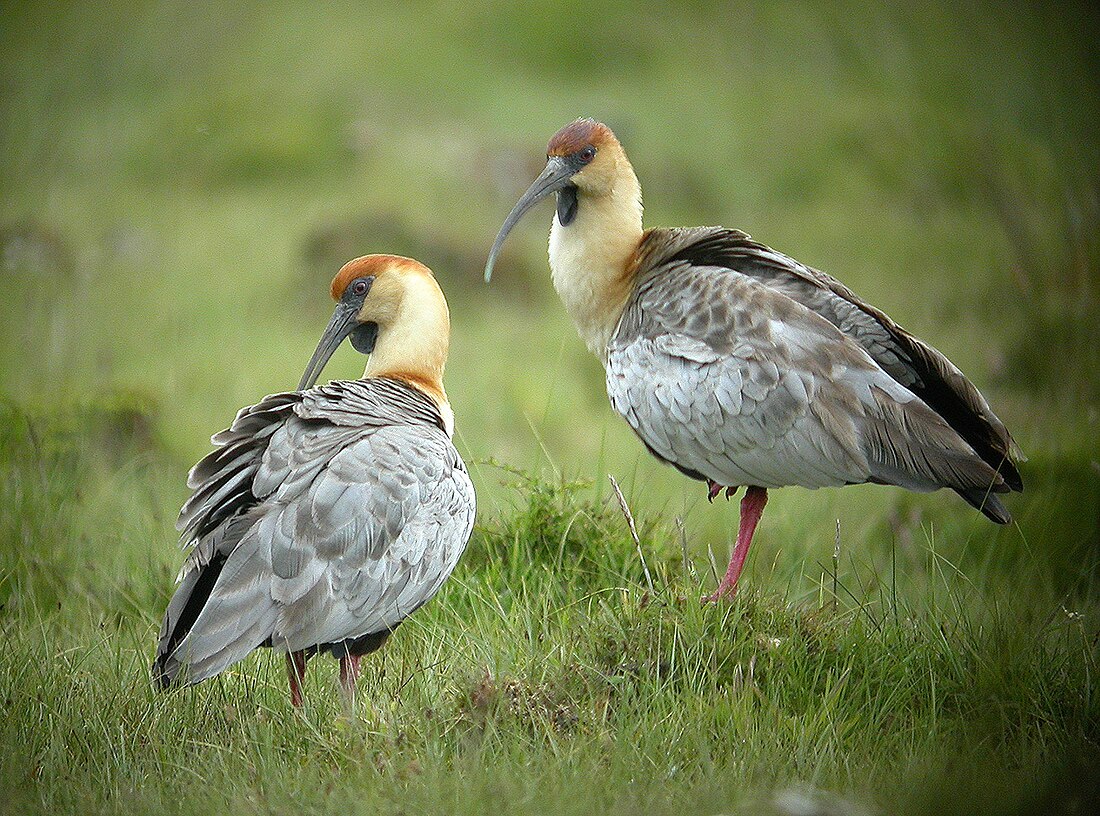Theristicus
Genus of birds From Wikipedia, the free encyclopedia
Theristicus is a genus of birds in the family Threskiornithidae. They are found in open, grassy habitats in South America. All have a long, decurved dark bill, relatively short reddish legs that do not extend beyond the tail in flight (unlike e.g. Eudocimus and Plegadis), and at least the back is grey.
| Theristicus | |
|---|---|
 | |
| Black-faced ibis. | |
| Scientific classification | |
| Domain: | Eukaryota |
| Kingdom: | Animalia |
| Phylum: | Chordata |
| Class: | Aves |
| Order: | Pelecaniformes |
| Family: | Threskiornithidae |
| Subfamily: | Threskiornithinae |
| Genus: | Theristicus Wagler, 1832 |
| Type species | |
| Tantalus melanopis Gmelin, 1789 | |
Taxonomy
Summarize
Perspective
The genus Theristicus was erected by the German naturalist Johann Georg Wagler in 1832 with the black-faced ibis as the type species.[1][2] The name is from the Ancient Greek theristikos meaning "of reaping".[3] The genus contains four species.[4]
| Common name | Scientific name and subspecies | Range | Size and ecology | IUCN status and estimated population |
|---|---|---|---|---|
| Plumbeous ibis | Theristicus caerulescens (Vieillot, 1817) |
south-western Brazil, especially in southern Mato Grosso and Rio Grande do Sul; Paraguay, especially in the Chaco and in the Paraguayan section of the Parana Basin; Uruguay; north-eastern Argentina and northern and eastern Bolivia |
Size: Habitat: Diet: |
LC
|
| Buff-necked ibis | Theristicus caudatus (Boddaert, 1783) |
northern and central South America in Colombia, Venezuela, the Guianas and Brazil |
Size: Habitat: Diet: |
LC
|
| Black-faced ibis | Theristicus melanopis von Berlepsch & Stolzmann, 1894 |
central Argentina and Chile |
Size: Habitat: Diet: |
LC
|
| Andean ibis | Theristicus branickii (Gmelin, 1789) |
western South America |
Size: Habitat: Diet: |
NT
|
References
Further reading
Wikiwand - on
Seamless Wikipedia browsing. On steroids.




